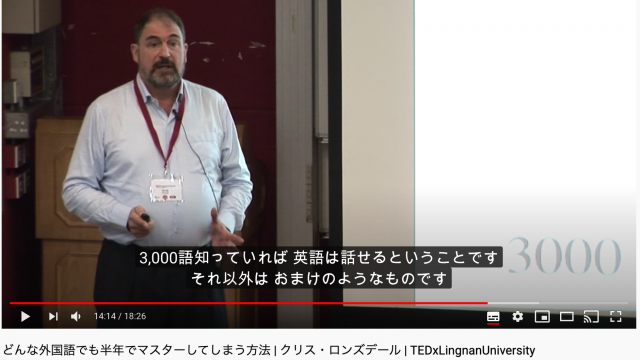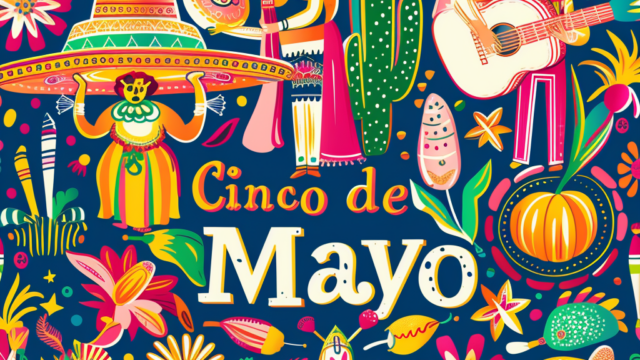
How TikTok’s Technology Makes the Service Popular (voanews.com)
How TikTok’s Technology Makes the Service Popular
A recent American law requires TikTok’s Chinese owner, ByteDance, to sell the company’s U.S. operations within nine months or face a nationwide ban.
But the video sharing service remains popular among Americans. It remains unclear if ByteDance will agree to sell the business. It also is not known whether the law can survive expected legal challenges related to freedom of speech.
Here is a look at how TikTok has developed its technology and expanded its business to include more than one billion users worldwide.
ByteDance was launched in China in 2012 by businessman Zhang Yimin. Its first product was a news collection service for Chinese users. In 2016, ByteDance launched a video sharing app called Douyin. The popularity of Douyin led the company to launch a foreign version of that app called TikTok.
ByteDance bought a video sharing service called Musical.ly for $1 billion in November 2017. The company then combined that app with TikTok in August 2018.
Technology experts have widely considered TikTok’s predictive algorithms a main driver of its success. The artificial intelligence (AI)-powered system seeks to identify what new videos users will likely be interested in based on what they have watched before.
TikTok offers users videos of many different interests. These could include users demonstrating dance moves, food preparation videos or personal care advice. Some TikTok users also take part in physical “challenges” that start on the app. Videos can discuss serious subjects like politics or war but could also include humorous performances or information about music or movies.
A recent report by Reuters news agency examined TikTok’s technology and operating methods. It suggests the company’s use of algorithms has played a major part in its success. Industry experts said the app’s algorithm is particularly good at working with the short video format used by the app.
Before TikTok, many industry experts believed the most important element to having a successful social media app was linking a user’s social connections. Such a model was successfully demonstrated by Meta’s Facebook and Instagram services.
But TikTok showed that an algorithm, driven by data from what a user looks for and watches on the service, could be more powerful. Rather than building an algorithm to connect large social groups, TikTok has sought to develop what it calls users’ “interest signals.”
Some TikTok competitors use similar interest-based algorithms. But TikTok has been able to perfect its system because it uses short videos, said Catalina Goanta. She is an associate professor at Utrecht University in the Netherlands who studies how social media services make money.
Goanta told Reuters that while the kind of algorithm TikTok uses is common among similar social apps, “what really distinguishes TikTok…is the design and the content,” she noted.
Experts say the short video format permits TikTok’s algorithm to identify in greater detail specific user interests and favorites. This enables the app to predict what kind of content TikTok users will want to see at different times of the day.
Jason Fung is the former head of TikTok’s gaming activities. He told Reuters the app’s short video format permits TikTok to learn what users want to see at a much faster rate.
“You’re able to collect data about a user’s preference a lot faster than YouTube, where maybe the average video is just less than 10 minutes long,” Fung said. “Imagine you’re collecting data about a user on average every 10 minutes versus every couple (of) seconds,” he added.
Industry experts say TikTok’s early entry into the short video market supported its success. Instagram did not launch its short video service Reels until 2020, while YouTube introduced its Shorts service in 2021.
TikTok has also been effective at getting its users to form groups by establishing certain hashtags, said Ari Lightman. He is a professor at Carnegie Mellon University in Pennsylvania. These groups that users form help TikTok learn more details about members’ behaviors, interests and personal beliefs.
Lightman said that if TikTok is banned in the U.S., he thinks it will be difficult for any existing technology company to reproduce the strong user culture that the app has built.
【日本語訳】
TikTokの技術がサービスを人気にしている理由
最近の米国の法律では、TikTokの中国の所有者であるByteDanceに対し、9ヶ月以内に米国事業を売却するか、全国的な禁止に直面するよう要求している。
しかし、このビデオ共有サービスは米国人の間で人気が高い。ByteDanceが事業の売却に同意するかどうかは不明のままだ。また、この法律が予想される言論の自由に関連する法的challengeに耐えられるかどうかも不明だ。
ここでは、TikTokがどのように技術を開発し、そのビジネスを世界中で10億人以上のユーザーを含むように拡大してきたかを見ていく。
ByteDanceは2012年に中国で実業家の張一鳴によって設立された。最初の製品は中国のユーザー向けのニュース収集サービスだった。2016年、ByteDanceはDouyinというビデオ共有appを立ち上げた。Douyinの人気を受けて、同社はTikTokというそのappの海外版を立ち上げた。
ByteDanceは2017年11月に10億ドルでMusical.lyというビデオ共有サービスを買収した。そして2018年8月、そのappをTikTokと統合した。
技術専門家は、TikTokの成功の主な原動力は予測アルゴリズムだと広く考えている。人工知能(AI)を搭載したこのシステムは、ユーザーがこれまでに視聴した内容に基づいて、ユーザーが興味を持つ可能性のある新しい動画を特定しようとする。
TikTokはユーザーに多様な興味を持つ動画を提供する。これには、ユーザーがダンスの動きを実演したり、料理の準備をしたり、パーソナルケアのアドバイスをしたりする動画が含まれる可能性がある。一部のTikTokユーザーは、appで始まる身体的な「挑戦」にも参加する。動画では、政治や戦争などの深刻な話題を扱うこともあるが、ユーモラスなパフォーマンスや音楽や映画に関する情報を含むこともある。
ロイター通信の最近の報道では、TikTokの技術と運用方法を調査した。それによると、同社のアルゴリズムの使用がその成功に大きな役割を果たしているという。業界の専門家は、このappのアルゴリズムは、appが使用する短い動画フォーマットに特に適していると述べた。
TikTok以前は、多くの業界専門家は、ソーシャルメディアappを成功させるための最も重要な要素は、ユーザーのソーシャルなつながりをリンクすることだと考えていた。そのようなモデルは、MetaのFacebookやInstagramのサービスで成功裏に実証された。
しかし、TikTokは、ユーザーがサービス上で検索して視聴する内容から得られるデータに基づくアルゴリズムの方が、より強力である可能性があることを示した。大規模なソーシャルグループを結びつけるアルゴリズムを構築する代わりに、TikTokはユーザーの「興味シグナル」と呼ぶものを開発することを目指してきた。
一部のTikTokの競合他社は、同様の興味に基づくアルゴリズムを使用している。しかし、TikTokは短い動画を使用しているため、そのシステムを完璧にすることができたと、オランダのユトレヒト大学で、ソーシャルメディアサービスがどのように収益を上げているかを研究しているCatalina Goanta准教授は述べている。
Goantaは、ロイターに対し、TikTokが使用しているようなアルゴリズムは同様のソーシャルアプリの間では一般的だが、「TikTokを本当に区別しているのは、デザインとコンテンツだ」と指摘した。
専門家は、短い動画フォーマットにより、TikTokのアルゴリズムは、ユーザーの特定の興味や嗜好をより詳細に特定することができると述べている。これにより、appは、TikTokユーザーが1日のさまざまな時間にどのようなコンテンツを見たいと思うかを予測することができる。
Jason Fungは、TikTokのゲーム活動の元責任者だ。彼はロイターに対し、appの短い動画フォーマットにより、TikTokはユーザーが何を見たいのかをはるかに速いペースで学習することができると述べた。
「YouTubeでは、平均的な動画の長さは10分弱かもしれないので、ユーザーのp嗜好に関するデータを収集するのにはるかに時間がかかります」とFung氏は述べた。「平均して10分ごとにユーザーのデータを収集するのと、数秒ごとに収集するのとを比べてみてください」と彼は付け加えた。
業界専門家は、TikTokが短い動画市場に早期に参入したことが、その成功を支えたと述べている。Instagramは2020年になるまで短い動画サービスのReelsを立ち上げず、YouTubeは2021年になってShortsサービスを導入した。
TikTokはまた、特定のhashtag(ハッシュタグ)を確立することで、ユーザーがグループを形成するのに効果的だったと、ペンシルベニア州のカーネギーメロン大学のAri Lightman教授は述べている。ユーザーが形成するこれらのグループは、TikTokがメンバーの行動、興味、個人的な信念についてより詳細を学ぶのに役立つ。
Lightman氏は、TikTokが米国で禁止された場合、同appが構築した強力なユーザー文化を再現することは、既存のテクノロジー企業にとって困難だろうと考えている。
単語・熟語チェック
・innovation – n. 革新、刷新、イノベーション
・controversial – adj. 物議を醸す、論争を引き起こす
・algorithm – n. アルゴリズム、問題解決の手順
・optimize – v. 最適化する、最良の状態にする
・demographic – n. 人口統計学的な区分(年齢、性別、職業など)
adj. 人口統計学的な
・preference – n. 好み、優先順位、選好
・hashtag – n. ハッシュタグ(SNS上で特定のトピックを示す#付きの単語)
・dilemma – n. ジレンマ、板挟み、進退両難の状況
・implication – n. 含意、暗示、影響、結果
・perspective – n. 視点、見方、展望
単語解説
・optimize
⇒「最適化する」という意味の動詞。名詞形は「optimization」。語源はラテン語の「optimus」(最良の)で、「最良の状態にする」という意味合いがあります。特にコンピュータ科学の分野で、アルゴリズムやプログラムの効率を最大限に高めることを指します。
・demographic
⇒「人口統計学的な」という形容詞と、「人口統計学的な区分」という名詞の両方の意味があります。語源はギリシャ語の「demos」(人々)と「graphein」(書く)に由来し、「人口の特徴を記述する」という意味合いがあります。年齢、性別、職業、収入、教育レベルなどの区分を指します。
・implication
⇒「含意、暗示」という意味の名詞。動詞形は「imply」。語源はラテン語の「implicare」(絡み合わせる)で、「言葉に込められた深い意味」を指します。また、「影響、結果」という意味もあり、ある事柄が引き起こす二次的な効果を示唆します。
原ちゃんチェック
この記事は、TikTokの人気の理由を技術的な観点から分析し、同アプリが直面する課題について考察しています。
TikTokが爆発的な人気を得た鍵は、ユーザーの興味関心を的確に予測する高度なアルゴリズムにあります。短い動画フォーマットとAIの活用により、ユーザーの好みを効果的に学習し、パーソナライズされたコンテンツを提供できる点が革新的だったのです。さらに、ハッシュタグを通じたユーザーコミュニティの形成も、強固なユーザー基盤の構築に貢献しました。
一方で、TikTokをめぐっては、国家安全保障やプライバシー保護の観点から懸念が示されています。同アプリの禁止がもたらす影響は計り知れず、イノベーションの促進とのバランスをどう取るかが問われています。
TikTokに代わるサービスを生み出すのは容易ではありません。技術的な優位性だけでなく、ユーザー文化の醸成も重要だからです。TikTok問題は、デジタル時代特有のジレンマを浮き彫りにしており、私たちに多角的な視点と慎重な判断を求めているのかもしれません。
このアプリの是非をめぐる議論は、技術と社会の関係性について改めて考えさせてくれる良い機会だと言えるでしょう。個人的には、TikTokのようなイノベーティブなサービスを全面的に禁止するのではなく、規制とのバランスを取りながら、その利点を活かす道を模索すべきだと考えます。






